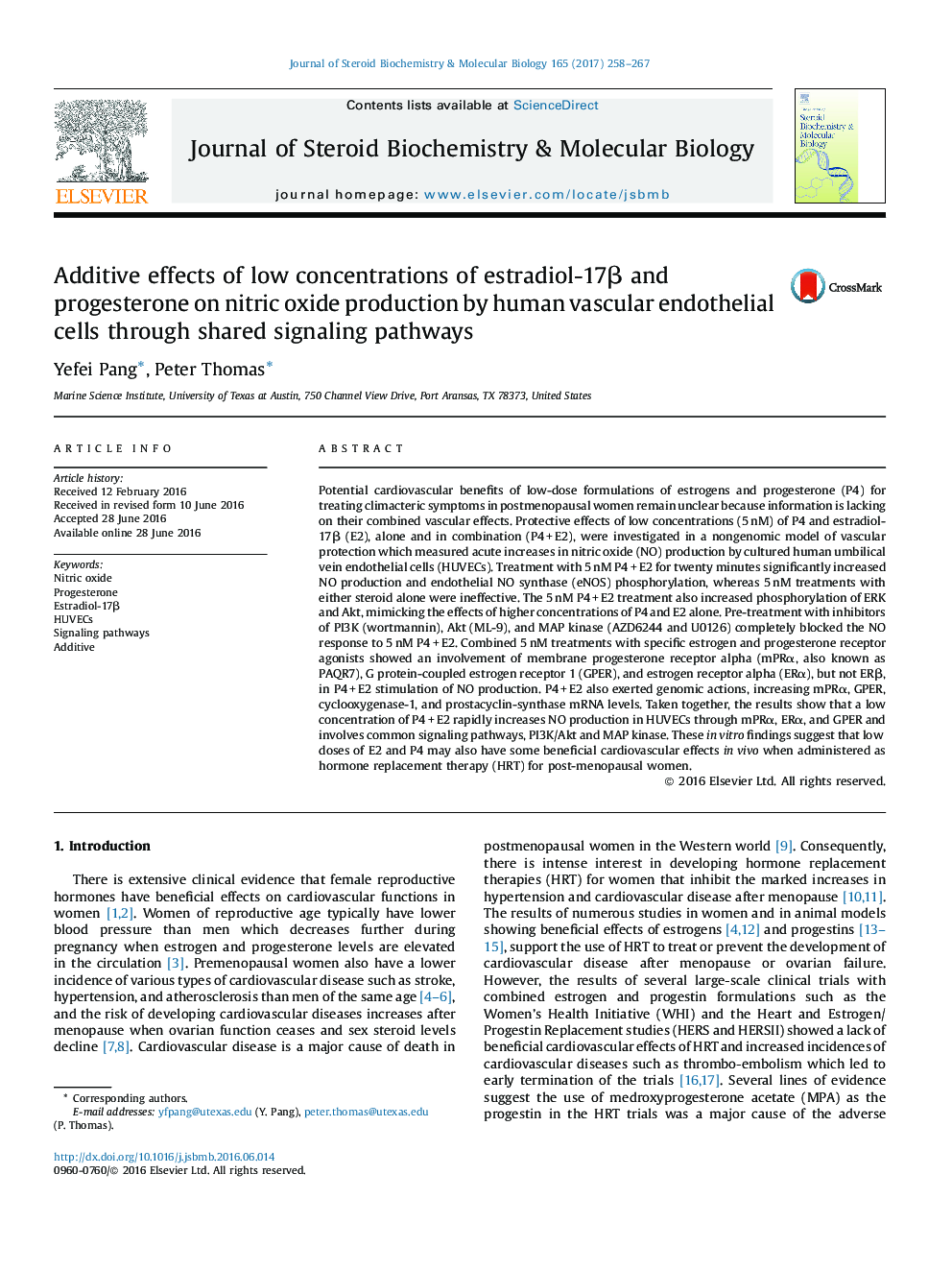| Article ID | Journal | Published Year | Pages | File Type |
|---|---|---|---|---|
| 5513138 | The Journal of Steroid Biochemistry and Molecular Biology | 2017 | 10 Pages |
â¢Low concentrations of P4 and E2 have additive effects on NO production in HUVECs.â¢Combined P4 and E2 treatment activates PI3K/Akt and MAP kinase signaling pathways.â¢Combined effects of P4 and E2 are mediated through mPRα, ERα, and GPER.â¢Low concentrations of P4 and E2 also have additive effects on COX-1 and PTGIS expression.
Potential cardiovascular benefits of low-dose formulations of estrogens and progesterone (P4) for treating climacteric symptoms in postmenopausal women remain unclear because information is lacking on their combined vascular effects. Protective effects of low concentrations (5 nM) of P4 and estradiol-17β (E2), alone and in combination (P4 + E2), were investigated in a nongenomic model of vascular protection which measured acute increases in nitric oxide (NO) production by cultured human umbilical vein endothelial cells (HUVECs). Treatment with 5 nM P4 + E2 for twenty minutes significantly increased NO production and endothelial NO synthase (eNOS) phosphorylation, whereas 5 nM treatments with either steroid alone were ineffective. The 5 nM P4 + E2 treatment also increased phosphorylation of ERK and Akt, mimicking the effects of higher concentrations of P4 and E2 alone. Pre-treatment with inhibitors of PI3K (wortmannin), Akt (ML-9), and MAP kinase (AZD6244 and U0126) completely blocked the NO response to 5 nM P4 + E2. Combined 5 nM treatments with specific estrogen and progesterone receptor agonists showed an involvement of membrane progesterone receptor alpha (mPRα, also known as PAQR7), G protein-coupled estrogen receptor 1 (GPER), and estrogen receptor alpha (ERα), but not ERβ, in P4 + E2 stimulation of NO production. P4 + E2 also exerted genomic actions, increasing mPRα, GPER, cyclooxygenase-1, and prostacyclin-synthase mRNA levels. Taken together, the results show that a low concentration of P4 + E2 rapidly increases NO production in HUVECs through mPRα, ERα, and GPER and involves common signaling pathways, PI3K/Akt and MAP kinase. These in vitro findings suggest that low doses of E2 and P4 may also have some beneficial cardiovascular effects in vivo when administered as hormone replacement therapy (HRT) for post-menopausal women.
